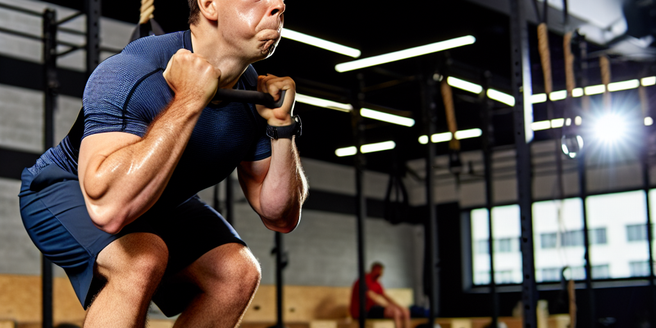
Identifying Your Fitness Goals
Before you begin your fitness journey, it’s essential to identify what you want to achieve. If it’s losing weight, breaking it down into how much you want to lose per week can help keep you focused. Are you looking to lose weight, gain muscle, or increase your stamina? Once you know your goals, you can create a fitness plan that aligns with them. Keep your ambitions realistic and as specific as you can to help you stay motivated. You may also want to consider getting a fitness assessment to understand your current fitness level and to set achievable goals.
Maximizing Your Time: Quick and Effective Workouts
Incorporating fitness into a busy lifestyle can be difficult, but with quick and effective workouts, you can maximize your time. One practical option is to try High-Intensity Interval Training (HIIT). HIIT combines short periods of intense exercise with rest periods, allowing you to burn calories quickly. Furthermore, HIIT can be practiced at home, in a park, or even in your office. You can also fit in your workout early in the morning or during lunch breaks. Additionally, you can try circuit training, where you perform a series of exercises targeting different muscle groups with little to no rest in between.
Integrating Exercise into Everyday Activities
You can turn daily activities into opportunities for exercise. This tactic, often referred to as “incidental exercise”, incorporates physical activity into your normal routine. Even doing chores around the house, such as cleaning or gardening, can contribute to your physical fitness. Take the stairs instead of the elevator, park your car far from the entrance, or pedal on a stationary bike while watching TV. You can also make family outings active with activities like hiking or biking. Finding joy in these activities can make your workout feel less like a task and more like an enjoyable part of your day.
Choosing the Right Nutrition for Energy and Health
Your diet plays a significant role in energy levels and overall health. A balanced diet should include lean proteins, fruits, vegetables, and whole grains. To ensure your body gets a variety of nutrients, it’s also beneficial to include foods like dairy, legumes, and seeds in your diet. In addition to these, it’s important to incorporate healthy fats, such as avocados and nuts, for added energy and nutrients. Also, consider the timing of your meals. Eating a healthy snack before a workout can give you an energy boost, while a balanced meal after can aid in recovery. Remember, water is equally important, especially during workouts.
Using Technology to Stay Committed and Track Progress
Technological tools can help you stick to your fitness routine and track your progress. Fitness apps can remind you of your workouts, track your physical activities, and even provide you with personalized workout plans. Moreover, these applications often offer a community where you can share your progress and engage with others for motivation and support. In addition, some fitness apps may offer dietary advice and meal plans to complement your exercise routine. Wearable fitness trackers can provide you with real-time data, allowing you to understand what works best for your body and to tweak your routine accordingly.
Maintaining a Positive Mindset: Overcoming Obstacles and Staying Motivated
Maintaining a positive mindset is crucial in your fitness journey. Celebrate small victories, like meeting your daily goal or pushing through a tough workout. Furthermore, make sure to reward yourself occasionally as a form of positive reinforcement. It’s also helpful to create a workout schedule that you can stick to, increasing the chances for your sustained success. Surround yourself with positive influences to stay motivated and remember, setbacks are a part of the process. Don’t get discouraged if you miss a workout or eat something unhealthy, instead use these moments to reflect and make improvements.
